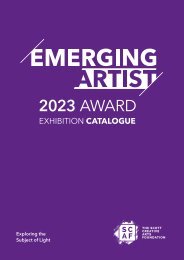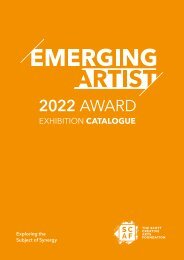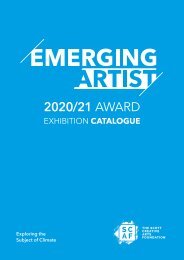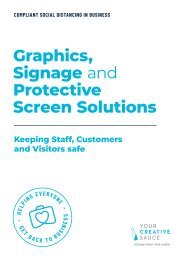Your Creative Solution - Print Audit Principles
Our print audit establishes a thorough understanding of methods used in the process of purchasing and managing print throughout your business.
Our print audit establishes a thorough understanding of methods used in the process of purchasing and managing print throughout your business.
You also want an ePaper? Increase the reach of your titles
YUMPU automatically turns print PDFs into web optimized ePapers that Google loves.
CLIENT<br />
PRINT AUDIT<br />
PRINCIPLES<br />
IMPROVING YOUR PRINT<br />
ORDERING PROCESS
OUR PRINT AUDIT<br />
ESTABLISHES<br />
A THOROUGH<br />
UNDERSTANDING<br />
OF METHODS USED<br />
IN THE PROCESS OF<br />
PURCHASING AND<br />
MANAGING PRINT<br />
THROUGHOUT YOUR<br />
BUSINESS.
REASONS FOR AUDIT<br />
The information gathered from our audit is analysed and reported back with<br />
suggestions and recommendations to deliver improved processes and cost savings.<br />
The reason for conducting the audit is to establish whether the implementation of a<br />
print management solution will deliver tangible benefits to your business. This can only<br />
be achieved by undertaking a thorough investigation of business needs, processes,<br />
consumption and specification analysis.<br />
THE KEY PRINCIPLES UNDERLYING<br />
THE AUDIT:<br />
∙<br />
∙<br />
∙<br />
∙<br />
∙<br />
∙<br />
∙<br />
Identify current methods for print procurement<br />
Identify current method for storage, distribution and management of print<br />
Measure the cost and effectiveness of current methodology<br />
Identify obsolete or over ordered material<br />
Highlight areas of duplication<br />
Understand the relationship between the printed products and the processes<br />
they are used in<br />
Identify both direct and indirect benefits<br />
AUDIT OBJECTIVES<br />
It is important that our audit has clear objectives within each area of investigation,<br />
which are agreed beforehand. As a general rule, the audit will focus upon six key areas<br />
for maximum benefit:<br />
∙<br />
∙<br />
∙<br />
∙<br />
∙<br />
∙<br />
Cost reduction<br />
Process improvement<br />
Risk mitigation<br />
Control and accountability<br />
Control of brand identity and assets<br />
Environmental considerations
COST REDUCTION<br />
DIRECT COST REDUCTION<br />
Our audit will seek to identify areas where reductions in the cost of printed materials<br />
used within your business can be achieved. Through a review of the current<br />
procurement methods and by assessing the current cost base versus the wider<br />
print market we will look to identify direct cost savings. At the same time product<br />
specifications will be challenged to establish if they are fit for purpose.<br />
INDIRECT COST REDUCTION<br />
The indirect costs that are incurred managing and organising print within a business<br />
can be significant. Typical areas that can lead to inefficiency include personnel,<br />
procedures, systems, obsolescence, processes and print usage.<br />
Our audit will ascertain where the opportunities are to make improvements that will<br />
reduce the indirect costs. The following areas will be covered to maximise<br />
the opportunities for indirect cost reduction:<br />
∙<br />
∙<br />
∙<br />
∙<br />
Identify the business processes in which printed materials play a key role<br />
Identify opportunities for product improvement, amalgamation<br />
and rationalisation<br />
Assess the efficiency of the supply chain<br />
Measure the amount of resource currently used to purchase and<br />
manage print<br />
These identify where cost savings can be made through greater efficiency by realising<br />
the benefits of an improved business process.<br />
PROCESS IMPROVEMENT<br />
The audit will seek to identify ways in which internal processes can be improved,<br />
resulting in additional value for your business. There are many ways in which this can<br />
be achieved but the main areas of focus are:<br />
SUPPLY CHAIN MANAGEMENT<br />
A diverse range of printed materials inevitably means that products will be sourced<br />
from a number of different suppliers. The audit will identify the optimum number<br />
of suppliers that are required to efficiently fulfil your print requirements. The audit<br />
will also establish a revised structure that allows the supplier base to be managed<br />
effectively whilst providing a single source solution. This approach will greatly reduce<br />
the amount of resource expended in supplier related activities.<br />
ADMINISTRATION<br />
The audit will assess the level of administration required for managing the print<br />
supply, including the processing of both purchase orders and supplier invoices. It<br />
will explore more efficient methods of administration that may include, for instance,<br />
e-procurement, digital organisation and tracking and consolidated invoicing.<br />
Recommendations will be made to reduce the amount of administration required<br />
providing a further cost benefit.
E-COMMERCE SOLUTIONS<br />
The audit establishes the current method for purchasing print and distributing it within<br />
the business. Once this has been ascertained it is then possible to suggest a range<br />
of e-commerce solutions designed to improve efficiency and provide a better system<br />
for end users. The systems available include variable templating, stock requisition,<br />
campaign management, location profiling, digital organisation and tracking, workflow<br />
management and management reporting. All of these solutions are flexible and would<br />
be tailored to meet the specific needs identified during our audit.<br />
PRODUCT INNOVATION<br />
Innovative products and processes are continually being developed within the wider<br />
print market. Our audit establishes the link between printed products and the business<br />
processes they are used within to recommend innovative ideas where new products or<br />
processes can be of benefit. This approach can have a powerful impact on marketing<br />
campaigns and operational effectiveness.<br />
RISK MITIGATION/BUSINESS CONTINUITY<br />
Whilst most businesses have an established risk mitigation strategy to protect<br />
themselves against unforeseen circumstances, often the supply of business critical<br />
print is overlooked. Our audit will seek to identify all business critical print items and<br />
determine whether or not the supply of these items can be guaranteed.<br />
CONTROL AND ACCOUNTABILITY<br />
For any company with a substantial spend on print, it is important to accurately<br />
account for, and control, all expenditure. Where numerous suppliers and ordering<br />
points are involved, this is often an area of confusion with little or no control and poor<br />
visibility. Our audit will establish the current levels of control and accountability and<br />
review existing management information. Recommendations will be made to enable<br />
accurate accounting of all expenditure by a department or site basis. A comprehensive<br />
range of management information will be recommended that provides accurate<br />
information identifying exactly where the print spend lies, providing a valuable tool to<br />
assist in driving down costs on an on-going basis.<br />
CONTROL OF BRAND IDENTITY & ASSETS<br />
It can be difficult to control the brand of an organisation across a wide spectrum of<br />
printed materials. This is largely due to two factors:<br />
EXTENT OF THE SUPPLY BASE<br />
Where numerous suppliers are providing print without the proper controls there<br />
will be a variance in the way the items are reproduced. Whilst everyone will look to<br />
reproduce logos faithfully, use the correct fonts, colours, etc there will always be<br />
potential for variation through interpretation. Materials and substrates will vary which<br />
will also impact upon the way that the organisations brand is represented. This can be<br />
exacerbated by the fact that suppliers are rarely managed centrally, often different<br />
departments within the business manage them independently.
BRAND AWARENESS<br />
When many individuals within a business are responsible for buying print, there is the<br />
chance that they are not fully aware of their own brand. For example, whilst marketing<br />
teams will be brand aware, other departments may not be and may not know the print<br />
they are purchasing does not conform to the brand identity.<br />
During our audit, samples from a wide range of print products will be obtained, and<br />
each will be assessed for brand compliance. This will include the use of logos, fonts and<br />
colours. Any variance from the corporate standard will be reported along with suitable<br />
recommendations for more effective control.<br />
ENVIRONMENTAL CONSIDERATIONS<br />
During our audit we will establish to what extent environmentally friendly processes<br />
and materials are being utilised throughout the supply chain. Whilst this may or may<br />
not be an important consideration for the client we will look to offer suggestions that<br />
will lessen the impact on the environment.<br />
AUDIT METHODOLOGY<br />
The mechanisms used to collect the audit information are:<br />
∙<br />
∙<br />
∙<br />
∙<br />
Data collection<br />
Purchasing analysis<br />
Process analysis<br />
Resource analysis<br />
DATA COLLECTION<br />
In order to make a meaningful analysis, the audit needs to collect information about<br />
products representing 70% - 80% of the total spend. This is not normally as difficult<br />
as it may appear as this can usually be obtained from 20% of the items. Samples of<br />
each item will be obtained and a questionnaire for each completed. The key questions<br />
relating to each item are:<br />
Annual consumption versus normal order quantity - used to determine purchasing<br />
patterns and establish whether or not best value is being obtained.<br />
Expenditure on product - to provide an accurate assessment of current spend and<br />
show the extent to which cost can be reduced.<br />
Current supplier - to evaluate the extent and nature of the supplier base.<br />
Whether or not the product is business critical - used in the analysis of risk mitigation.<br />
The purpose of the item - used to understand the function of the item.<br />
How the item is created/amended - used to understand the artwork/<br />
origination process.<br />
Whether or not the product could be improved in anyway – to establish whether the<br />
product is fit for purpose and facilitate process improvement.<br />
Part of the data collection is normally facilitated through individual meetings with the<br />
end user. This provides a vital opportunity to understand how the products are used<br />
in the business process and enables us to consider solutions that will benefit both the<br />
user and your business as a whole.
PURCHASING ANALYSIS<br />
The audit meetings will be held with the key individuals that purchase print throughout<br />
your business. The purpose of these meetings is to establish the methods currently<br />
used to purchase print, to understand the needs and expectations of the purchaser<br />
and to allow the purchaser to raise any relevant issues. This is a useful exercise as it<br />
highlights variations in the level of service provided by suppliers and, in conjunction<br />
with information obtained via the questionnaires, enables analysis of purchasing<br />
patterns and the degree to which the enterprise purchasing power is being leveraged.<br />
PROCESS ANALYSIS<br />
During the meetings with end-users and purchasers, we will gain a complete<br />
understanding of the various processes used to purchase, manage and<br />
administer print. This information is used to suggest solutions to improve<br />
processes in a way that will benefit the print users and enable realisation of<br />
further indirect cost benefits.<br />
RESOURCE ANALYSIS<br />
This analysis is designed to assess the amount of resource currently utilised in the<br />
processes of purchasing and managing print. Purchasers will be asked how much of<br />
their time is spent on print purchasing and how it impacts upon their core activities.<br />
Those involved with distributing print around the business and the extent to which<br />
this impacts on their other activities will also be assessed. Finally we will establish<br />
the storage space required and assess if this space could be better utilised by the<br />
business. This information will be used to illustrate the potential benefits of an<br />
integrated print management system that will enable resources to be re-deployed in a<br />
cost effective manner.<br />
REPORT FINDINGS<br />
Following the audit a comprehensive report is prepared containing the audit findings<br />
and recommendations for change. These will include:<br />
ANALYSIS OF CURRENT EXPENDITURE<br />
This will take the form of a detailed review of the products that were audited, along<br />
with usage and current expenditure information. These are normally arranged on a<br />
departmental basis so that key areas of spend can be easily identified.<br />
ANALYSIS OF PRINT PURCHASING METHOD<br />
This will provide a detailed account of the current situation identifying purchasing<br />
patterns, stock management, accountability, processes, brand integrity and utilisation<br />
of resources.<br />
RECOMMENDATIONS FOR CHANGE<br />
This will provide a comprehensive explanation of all aspects of the <strong>Print</strong> Management<br />
solution and describe how it will deliver both direct and indirect cost benefits.
YOUR CREATIVE SOLUTION<br />
Barn Studios,<br />
Red House Barn,<br />
Goddards Green Road,<br />
Benenden, Cranbrook,<br />
TN17 4AR<br />
M +44 (0) 7887 596 392<br />
E hello@yourcreativesolutionltd.com<br />
yourcreativesolutionltd.com

















